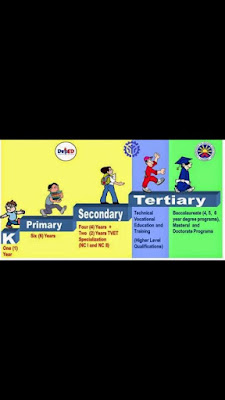My first term and English term in Asia Pacific College was really memorable and fruitful because of the people I've met which are my professors,blocks mates and friends. when I decided to go back to school, honestly I don't know why I chose APC. when I'm looking for a university to enroll in I just saw APC in the Internet. I don't have any idea about this school but I prayed to god that he would provide the best school for me.
After I inquired in the admission I took the entrance exam and I passed it.on my first day I felt very nervous,scared and anxious because its the first time I'm going back to school after 14 years and I don't know what to expect from my classmates, professor and especially with my subjects.
After I inquired in the admission I took the entrance exam and I passed it.on my first day I felt very nervous,scared and anxious because its the first time I'm going back to school after 14 years and I don't know what to expect from my classmates, professor and especially with my subjects.
My original section was BM152 but the registrar office changed my section to BM151.when I met all my classmates, most of them are younger than me and they are very competitive.Honestly I felt culture shock because it was not easy to adjust for me I know that I need to refresh my mind I need to learn how to effectively study my lessons and how to do my assignment,sometimes I'm at lost for what to do. I needed to ask my classmates for help I needed to go back to basics..
I was very thankful to god because I belong to Bm151 all my professor's are very kind, cool,easy to approach,they really guide their students and are always giving another chance.
I was very thankful to god because I belong to Bm151 all my professor's are very kind, cool,easy to approach,they really guide their students and are always giving another chance.
To all my classmates I was very thankful to them because they are very kind and they threat me like their Ate. They always called me ate Jem and they are very sweet to me, they always hug me.because of them, my professors and my classmates in Bm151, I feel I had a family in APC.Now I realized why god brought me in APC because I've met people like my professor's Miss Pam,Sir Christian Fruto,Miss Joyce Umali,Very cool Sir Jaime Daroy,Miss Precy Agaton, they are very kind and very appreciable Miss Elizabeth Reyes,Thank you so much to all my professor's I learned a lot from you miss and sir.I learned how make a blog,how to make a journal,how to make a critical analysis,how to make business proposal and I faced my fear to speak in front of other people.
To my BM151 family I'm very thankful to you guys because You treat me like your own ate and I'm very happy for that,thank you for the good and happy memories,bonding,joy and laughter.. I felt sad because next term I will not be able to belong to your bockBM151 because I need to take another subject. how I wish that I belong to Bm15 next term but like I was saying and I believed that god always have a purpose in our life that we need to accept but nothing could change the fact that they are still my family and I'm still their ate Jem,and I'm hoping that next term I will meet professors like my professor and block mate/classmates in my English term. I really,really miss you all i hope the feeling is still mutual.I'm looking forward for my next term in APC l believe that every person we meet in our life god always have a purpose for us..thank you so much for the wonderful memories, unforgettable,happiness."My English Term"






























